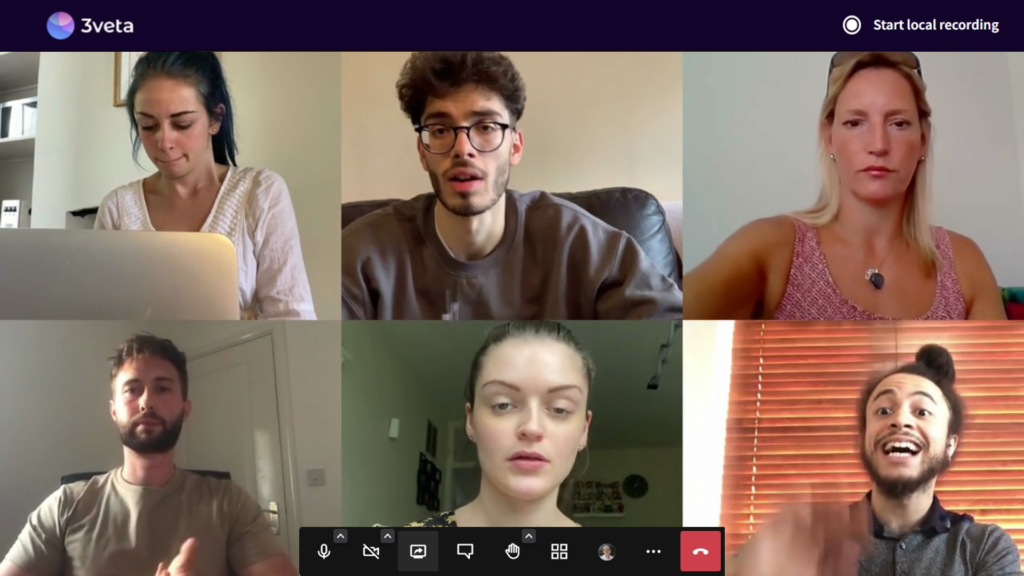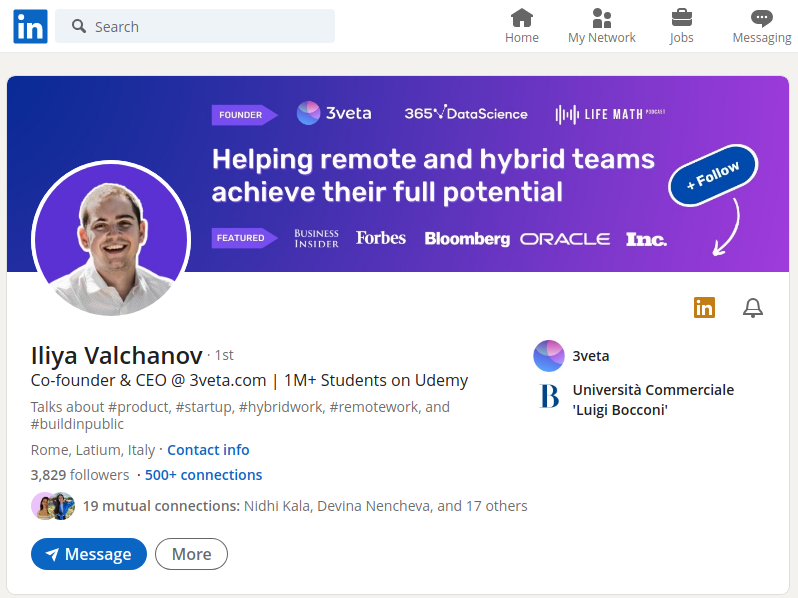Even after the pandemic ended, video calls continue to be a key part of the sales process for many companies. They even made company structures such as ours possible.
Because we’re a remote-first company, not only can everyone in the world work for us, as long as they have a stable internet connection, but we’ve also closed deals with clients who are based on different continents.
All of this became possible with sales video calls.
That said, if you’re not used to using them or haven’t had much success with them, it can be tough to know where to start.
In this blog post, we’ll give you some tips on how to make the most of your sales video calls and improve your sales performance.
Table of contents
What is a sales video call?
Before we get into the nitty-gritty of how to use sales video calls more effectively, let’s quickly go over what they are and why you should be using them.
A sales video call is a meeting between a lead or a prospect and a salesperson that takes place over video conferencing software. The purpose of these calls is to build relationships, establish trust, and eventually close deals.
Nevertheless, it’s not easy to get to that point.
In order to close a deal, you need to first establish a good rapport with the prospect, understand their needs, and offer a solution that meets those needs.
This is where most salespeople struggle.
However, if you use sales video calls correctly, they can be a powerful tool for your sales team and help you close more deals.
What are the benefits of sales video calls?
Sales video calls are an excellent way to connect with prospects and increase B2B sales.
They’re promptly equating in-person meetings with prospects, in fact, in a recent McKinsey study, around 60% of salespeople say that they get the same value via video conferencing as they do from in-person meetings.

That said, sales video calls offer many other benefits, including:
Ease of use
Sales video calls are easy to use when you’re working remotely.
Your sales call can connect with customers all around the world in minutes. We can attest to this since 99% of our onboarding happens via video calls and not actual in-person meetings.
Convenience
Sales video calls are convenient for both parties.
Imagine being able to meet with a customer without having to leave your office or home. Video calls make this possible.
Increased sales
Close rates have increased for over 50% of salespeople who use video as part of their sales cycle.
Video calls help build relationships and establish trust, both of which are essential for closing deals.
Reduced costs
Sales video calls can save your company money.
They eliminate the need for travel and/or recurring commutes, costly business lunches, and all other associated expenses.
5 tips to improve your close rate with sales video calls
Now that you know how to set up a sales video call, let’s dive into some tips that will help you and your sales team improve your success rate.
Tip 1. Get to know your audience
The first step is to get to know your audience.
What are their needs? What are their pain points? What are their goals?
You need to understand your audience and their pain points before you can offer them a solution.
The best way to do this is to research them thoroughly.
If you’re in the B2B sector, you can use LinkedIn to research your prospects.
Look at their profile, see what kind of work they do, and try to understand their needs.

If you’re a B2C company though, you can use social media to research your prospects.
See what they’re talking about, and what they’re interested in, and try to understand their needs.
Tip 2. Use an engaging opener
Once you know who your audience is and what their needs are, it’s time to start your video call.
The first few seconds are crucial.
This is the first “M” of what Forbes calls “The 3 Ms technique”: Magnetic, Mesmerizing, and Memorable.
You need to make a good first impression and engage your prospect right from the beginning.
The best way to do this is with an engaging opener.
Your opener should be something that captures your prospect’s attention and makes them want to hear more.
It could be a question, an interesting fact, or anything else that can pique their interest.
If you’re selling a new type of software, you could open with a question like: “Do you know what the number one reason businesses fail is?”
With this question, you’re trying to get to the fact that most businesses fail because they don’t have the right tools.
This will get your prospect’s attention and make them want to know more about what you have to say.
You can then follow up with how your software can help them avoid this and achieve success.
💡 Pro tip
3veta lets you easily schedule and host video sales calls, send automatic email reminders, and allows you to share your screen, record your meetings, and much more. Sign up for your free trial.
Tip 3: Build rapport
The next step is to build rapport.
This is where video calls have a big advantage over phone sales calls.
On a video call, you can see the person you’re talking to. This makes it much easier to build rapport than on a phone call.

There are a few things you can do to build rapport on a video call:
- Use their name(s): Many pieces of research have shown that using someone’s name is one of the best ways to build rapport. It makes the person feel special and appreciated.
- Smile: Yes, it seems quite obvious, but smiling is another great way to build rapport. It makes you come out as friendly and approachable. Qualities that everyone looks for in any salesperson.
- Make eye contact: Though this is a video call we’re talking about, making eye contact is still very much crucial in the conversation. Keep that camera on you and make sure you’re looking into it as often as you can as if you would the person’s eyes.
- Listen to them: Active listening is key in any conversation and one of the best practices in video conferencing. People can start talking over each other very easily on video calls, so make sure you’re really listening to what the other person is saying.
Tip 4: Find common ground
Finding common ground is another great way to build rapport.
To find common ground, you need to look for something that you have in common with your prospect.
It could be something as simple as “We’re both from the same city” or “We both went to the same school.”
In this case, instead of hard selling your product or discussing payment right away, you let your prospect talk about themself, something that all human beings love!
Once you’ve found something in common, you can use it to start building rapport.
For example, if you’re both from the same city, mention how you know the best places to eat there.
This will turn into friendly banter and make the prospect feel more comfortable with you.
When you’ve found common ground, you can use it to transition into the selling part of the call.
For example, you can say something like “Since we’re both from the same city, I’m sure you know how tough it is to find a good job there.
That’s why I’m excited to tell you about the new software I’ve been using to help people find jobs.”
Tip 5: Overcome objections
The last tip is to overcome objections. This is one of the most important skills you can have as a salesperson and something you need to communicate with your sales team.

There are two types of objections:
- When the prospect doesn’t want to buy your product or service.
- When they do want to buy but have a specific concern that’s holding them back.
For instance, going back to the new software example, a common objection would be “I don’t have time to learn a new software.”
To overcome this objection, you need to address it head-on.
In this case, show the prospect how your software either doesn’t need that much time to learn or how it will save them time in the long run
You can also overcome objections by offering solutions that address the prospect’s specific needs and make them feel special.
For example, if the objection is “I don’t have enough money,” you could offer a payment plan because they joined your call today.
This will have your audience feeling like they’re getting a deal that’s too good to pass up.
Conclusion
When it comes to video calls for sales, the key is to be prepared and use every opportunity to build rapport with your leads.
Sales video calls can be an extremely effective way to increase sales, but only if they’re done well.
That said, always remember to ask for feedback and continue to improve your sales skills. The more you practice, the better you’ll become!
And in case you are wondering how to reduce no-show appointments, have a look at this article.

Amine Ghorbel
Amine Ghorbel is a content creator and editor at heart. As an SEO manager with LaGrowthMachine, a sales automation solution, he specializes in Growth & Sales matters and helps them boost their organic traffic.
